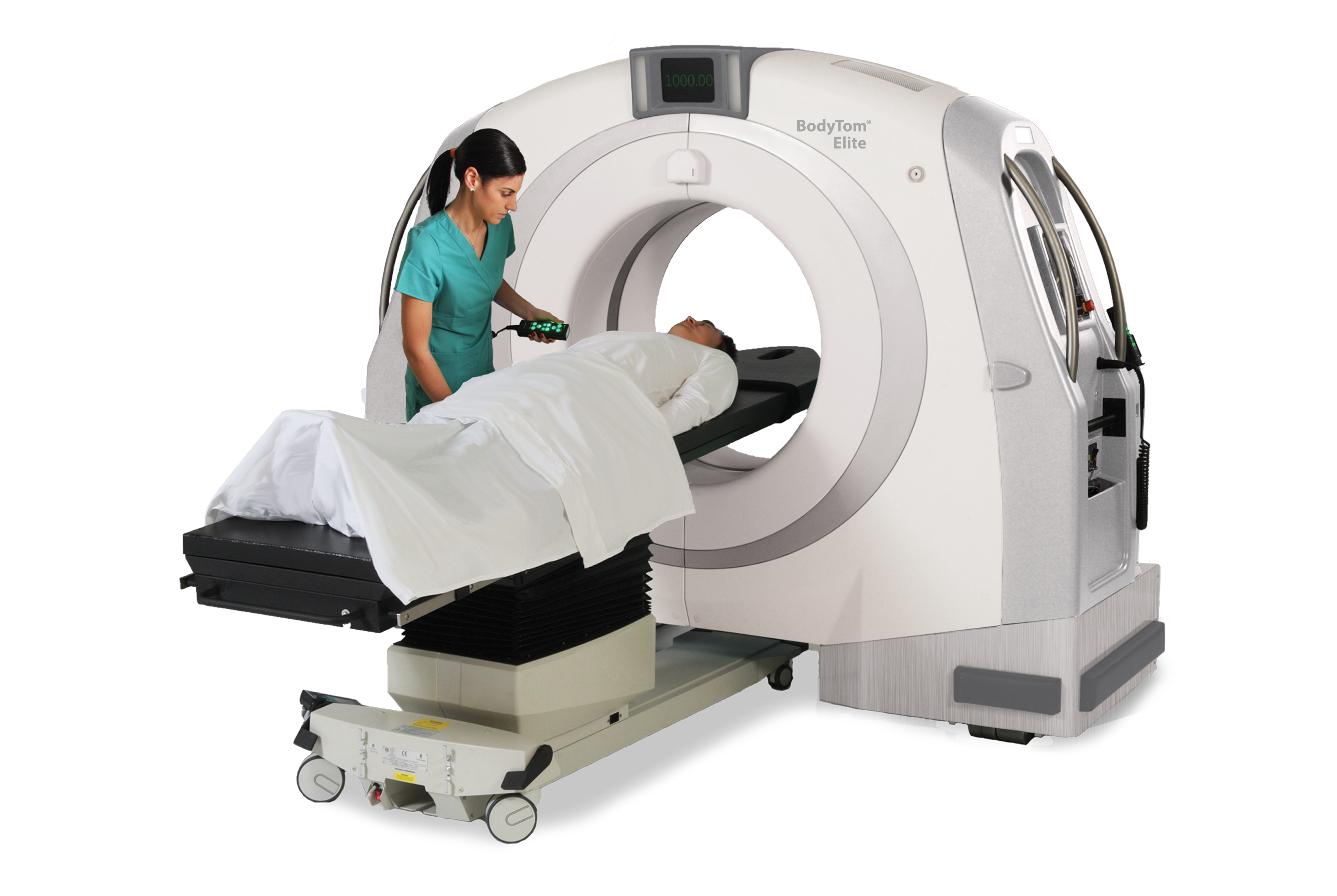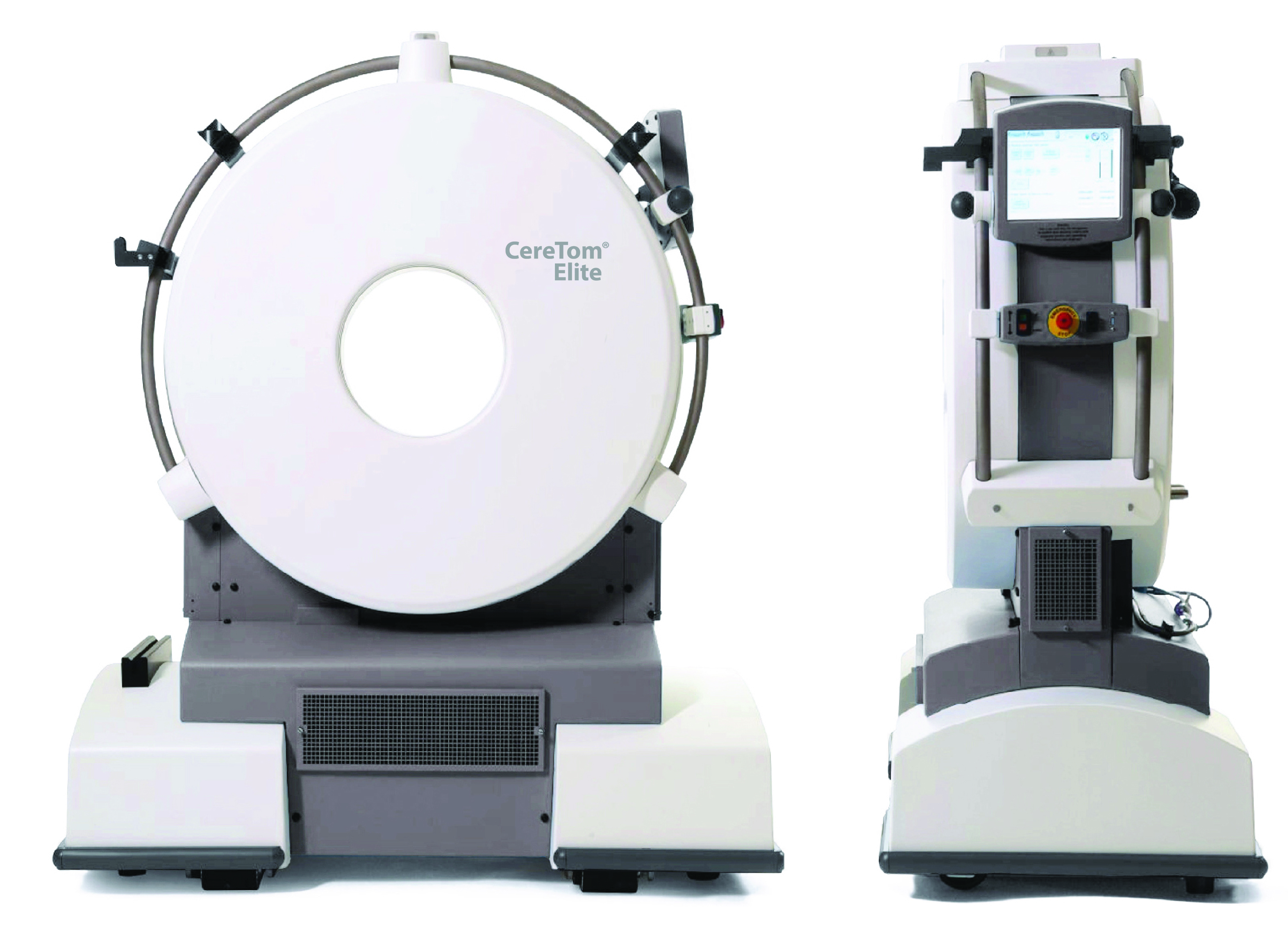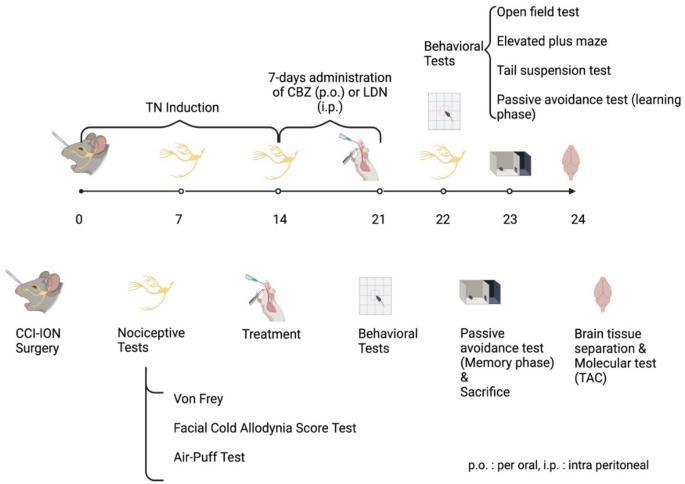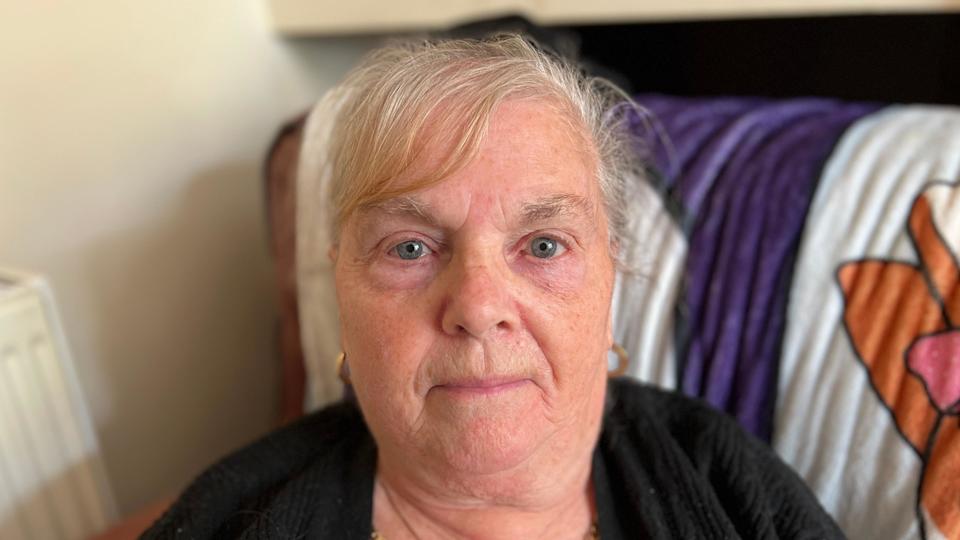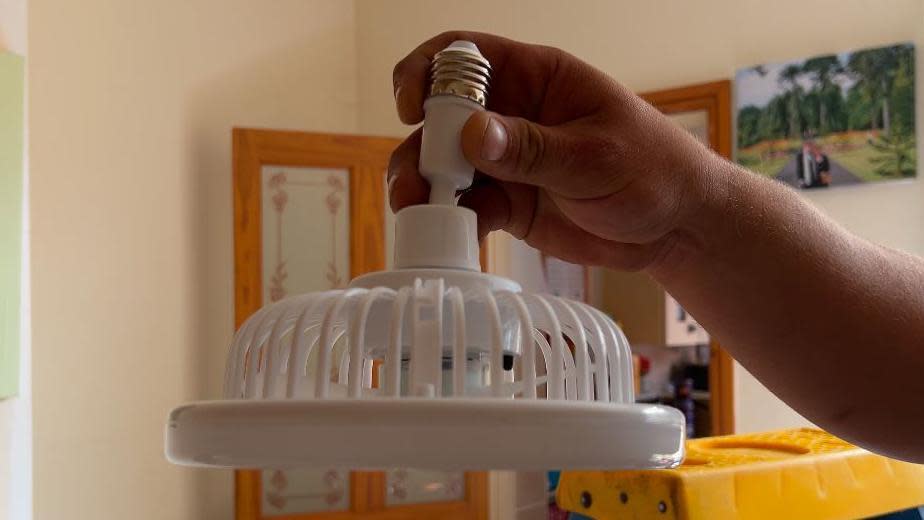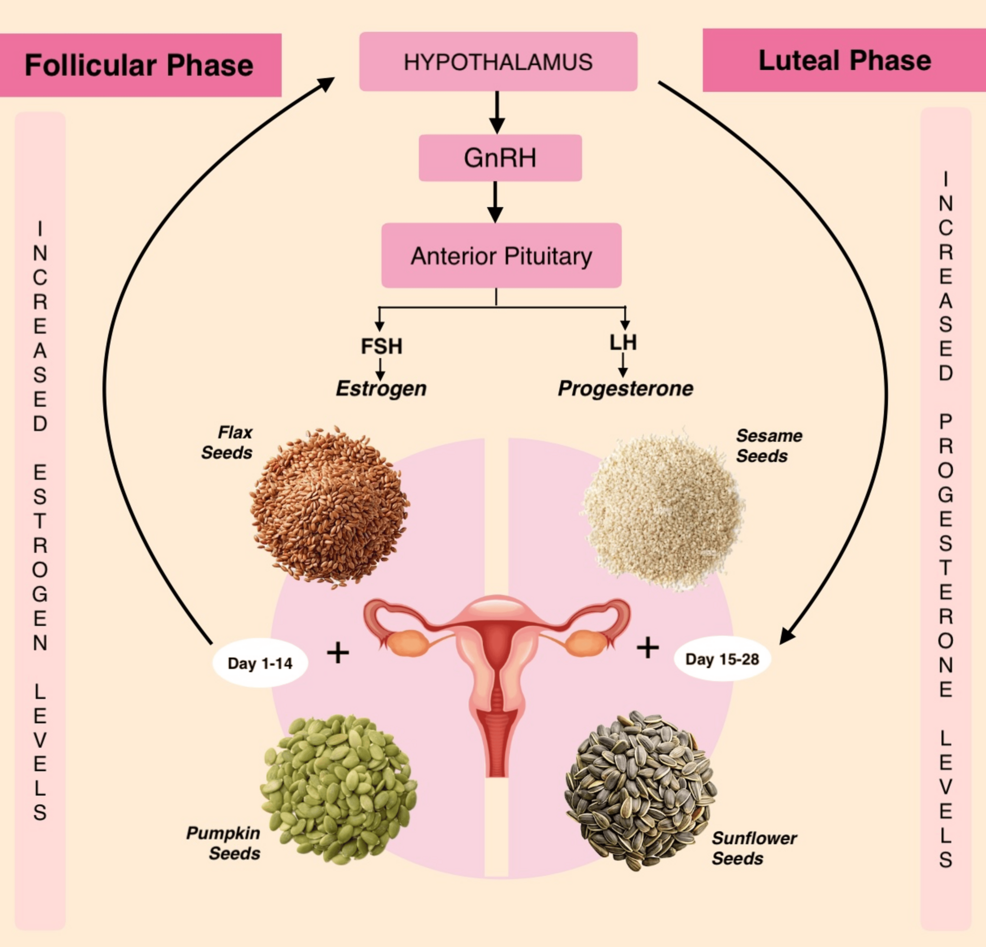Chronic TN heightens the risk of mental health conditions and can lead to reductions in the quality of life. CBZ is the primary medication prescribed for managing TN9,30,31. However, many patients encounter difficulties tolerating this drug due to its associated side effects. These adverse effects can include drowsiness, visual accommodation disorders, liver inflammation, changes in liver enzyme levels, kidney impairment, heart failure, delayed multi-organ failure, leukopenia, thrombocytopenia, and more27,30,32. In instances where analgesic relief for TN is inadequate with CBZ or if it induces adverse effects, alternative anticonvulsant medications can be utilized including Lamotrigine, Baclofen, Phenytoin, Gabapentin, Clonazepam, Valproate, Mexiletine, and Topiramate33. The pain-relieving properties of LDN, demonstrated in a rat model of orofacial neuropathic pain have suggested its potential as an alternative treatment for TN15. The primary objective of the current research was to examine the effects of Co-administration of LDN and CBZ on pain levels, anxious and depressive-like behaviors, avoidance tendencies and antioxidant activity in a male rat model of TN. This study aimed to explore whether incorporating LDN with CBZ could effectively manage TN symptoms at a reduced CBZ dosage, thereby minimizing side effects, without re-evaluating CBZ’s well-documented side effects34,35,36.
In the present study, using a rat model of TN induced by CCI-ION surgery, we found that treating rats with LDN for 7 days, similar to CBZ, alleviated facial mechanical and thermal allodynia. Importantly, combining LDN with different concentrations of CBZ had significant impact on managing chronic TN. Interestingly, using lower doses of CBZ (30 mg/kg/day and 10 mg/kg/day) along with LDN showed a similar effect to using CBZ alone at 100 mg/kg/day in reducing thermal and mechanical allodynia. Our findings support previous clinical and preclinical results that have shown the analgesic effect of LDN in various chronic pain conditions31,37.
Administering LDN intrathecally has been shown to effectively reverse tactile allodynia in rats with spinal and infraorbital nerve ligation in a dose-dependent manner15,38. Ultra-low doses of Naltrexone enhanced cannabinoid-induced analgesia and morphine antinociception, while also attenuating the development of morphine tolerance. Naltrexone was observed to enhance morphine’s analgesic effects and prevent tolerance by blocking excitatory opioid activity, amplifying morphine’s inhibitory actions39. Furthermore, in a study on cannabinoid-opioid interactions, it was suggested that the activation of opioid receptors coupled to Gs-proteins might diminish cannabinoid-induced antinociception and/or impair motor functioning, providing a potential mechanism for this interaction37,40.
Classical TN represents a severe neuropathic facial pain disorder, often accompanied by heightened risks of anxiety and depression41. In our TM rat model, anxious and depressive-like behaviors were noted in addition to the facial sensory changes after the CCI-ION injury. CBZ has been used to treat different psychological disorders such as anxiety and post-traumatic stress disorder. Its effects on the neurotransmitter systems, particularly the serotonergic, GABAergic, and noradrenergic pathways, as well as its influence on G-protein modulation, may contribute to its effectiveness. Furthermore, the anxiolytic effects of CBZ may stem from its capacity to inhibit the release of excitatory neurotransmitters through the inhibition of voltage-gated Na + channels, alongside its modulation of glutamatergic neurotransmission. Indeed, CBZ plays a critical role in addressing organic functional disorders within the limbic system by mitigating kindling phenomena42. Our results demonstrated that the anxious and depressive-like behavior in the TN group was significantly improved when treated with both CBZ and LDN, suggesting a synergistic interaction between these two agents in managing TN related psychiatric symptoms. In the tail suspension assay, noteworthy distinctions were observed among the TN (CBZ 100 + LDN) and TN (CBZ 30 + LDN) groups, signifying a diminution in depressive-like behaviors correlated with neuropathic pain when CBZ and LDN were co-administered in contrast to the group receiving CBZ 100 monotherapy.
CBZ selectively enhances the levels of acetylcholine in the central nervous system while concurrently diminishing choline levels, both of which are crucial for cognitive processes such as learning and memory43. However, CBZ has not been reported to enhance learning and memory processes. On the other hand, in rats and mice, Naltrexone has been shown to improve working memory performance44. These effects were confirmed in our study by use of the passive avoidance test, which revealed significant differences between CBZ + LDN groups compared to the TN group. In the memory phase of the passive avoidance test, there was a significant difference in the step-through latency in the TN and CBZ 100 mg groups when compared to the Sham. All of the groups treated with LDN showed a significant improvement in passive avoidance learning and memory in comparison to untreated TN rats. Additionally, the recovery of impaired passive avoidance memory in the TN group treated with LDN was significantly higher than that of the group treated with CBZ 100 mg, which could indicate that CBZ could not reverse the effect of TN in cognitive abilities.
The molecular effects of co-administering CBZ and LDN in the spinal trigeminal nucleus were also studied, which showed a significant increase in oxidative stress markers in the TN group. However, these markers decreased notably after 7 days of treatment with both CBZ and LDN. This finding suggests a synergistic interaction between these two agents in managing TN.
CBZ is well-established in TN management for its ability to inhibit voltage-gated Na + channels, thereby reducing neuronal hyperexcitability and preventing repetitive firing in the trigeminal nerve45. By stabilizing overactive neurons, CBZ alleviates pain associated with TN. However, its efficacy is often limited by dose-related side effects and incomplete control of pain, particularly in refractory cases. Our findings suggest that coadministration of LDN may enhance CBZ’s therapeutic potential by targeting complementary molecular pathways, especially those related to oxidative stress and neuroinflammation. At standard therapeutic dosages, Naltrexone markedly inhibits activity at mu- and delta-opioid receptors, while exerting a comparatively diminished effect on kappa-opioid receptors. Since activity of endogenous beta-endorphins at mu-opioid receptors is linked to endogenous analgesic mechanisms, it may appear paradoxical to prescribe Naltrexone to patients suffering from chronic pain. One would expect that this medication would diminish the analgesic effects derived from beneficial endogenous opioid activity. Furthermore, Naltrexone concurrently exerts an antagonistic influence on non-opioid receptors, specifically Toll-like receptor 4 (TLR4), which is located on macrophages, including microglia. Microglia are responsible for the production of inflammatory and excitatory mediators that can induce negative behaviors, including heightened pain sensitivity, fatigue, cognitive impairment, sleep disturbances, mood disorders, and overall malaise. By inhibiting the activation of microglia, Naltrexone attenuates the synthesis of reactive oxygen species and other potentially neuroexcitatory and neurotoxic substances, a mechanism that has been shown to confer neuroprotective and analgesic actions46. These effects are particularly relevant to the pathophysiology of TN, where neuroinflammatory processes play a critical role in sensitizing the nervous system and amplifying pain signaling. Previous studies have demonstrated that LDN can reduce pro-inflammatory cytokines, such as TNF-α and IL-1β while promoting the release of anti-inflammatory cytokines like IL-1047. However, no significant changes in TNF-α levels in the brainstem and spinal cord were seen following LDN administration15. Oxidative stress is known to worsen neuropathic pain by damaging neurons and increasing sensitivity to pain stimuli. The ability of LDN to reduce oxidative factors suggests that its benefits in TN may extend beyond its anti-inflammatory properties. This is consistent with earlier research showing that LDN can modulate glial activity and neuroinflammatory pathways by targeting TLR4 and µ-opioid receptors. Although our study did not directly evaluate TLR4, previous studies have shown increased TLR4 expression in peripheral nerve structures, such as the trigeminal ganglion, in animal models of TN48. Therefore, LDN’s effects on oxidative stress in TN could also be related to its pain relief. Additionally, LDN’s impact on neurotrophic factors like brain-derived neurotrophic factor (BDNF) has been shown to play a role in neuropathic and inflammatory pain49. BDNF is involved in maladaptive neuroplasticity, contributing to the persistence of chronic pain. LDN has been found to help reduce pain sensitivity by affecting brain chemicals like brain-derived neurotrophic factor (BDNF) and interleukin-10 (IL-10), which are involved neuropathic pain processes15. Although we did not assess BDNF in our study, prior research suggests that LDN’s influence on BDNF expression may depend on the baseline pain status of the animal, potentially reducing BDNF levels in the presence of chronic pain. This modulation of BDNF, combined with CBZ’s Na + channel inhibition, may contribute to the observed improvements in TN symptoms15.
The results we obtained are consistent with findings from other studies that investigated the potential for combination therapies in managing TN and other neuropathic pain conditions38,50. The combination of CBZ and LDN appears to provide a broader therapeutic effect by simultaneously targeting neuronal hyperactivity, oxidative stress, and neuroinflammation. The mechanistic actions of both drugs appear complementary and could explain why our study showed a greater reduction in oxidative markers when the drugs were combined, as CBZ reduces excitatory firing while LDN can reduce glial activation and oxidative damage.
The combination of Naltrexone and CBZ has been shown clinically to produce a synergistic interaction as the intrathecal administration of Naltrexone with oral CBZ15 showed heightened management of pain. However, clinically, this combination is still underexplored. While there isn’t yet strong evidence showing a direct synergy between LDN and CBZ clinically, there’s reason to believe they could complement each other. Naltrexone’s ability to modulate the immune system, paired with Carbamazepine’s effect on nerve signaling, could mean that together, they might offer synergistic pain relief, similar to that seen with LDN and Gabapentin and Pregabalin, especially for conditions like trigeminal neuralgia or chronic neuropathic pain38. More research is needed to explore how they might work together more effectively and determine the best ways to use them in clinical practice. Further, future studies should evaluate concentration-dependent effects as while we chose to use 0.5 mg of Naltrexone as that concentration previously was found to be synergistic with other drugs to enhance pain relief (Pineda-Farias et al., 2017), other concentrations could result in differential effects. As TN is difficult to manage effectively, the potential for a combined treatment strategy that helps ease nerve pain is worth further investigations51.
Besides the synergistic effects of coadministration of CBZ and LDN on ameliorating pain, the combination also improved anxiety-like behavior, depressive-like behavior, and cognitive function, which were significantly affected by CCI-ION. . These improvements were observed with CBZ at concentrations of 10 or 30 mg/kg/day, as well as with CBZ at a concentration of 100 mg/kg/day, either alone or in combination with LDN. This indicates that the dosage of CBZ can be lowered by 70% while still achieving the same therapeutic effect. This could potentially result in fewer side effects associated with CBZ and delay the development of drug resistance.
One notable limitation of our study is the exclusive use of a male rat model, which restricts our ability to evaluate sex differences and may not accurately reflect the processes occurring in humans. Additionally, our research focused solely on the effects of i.p. administration of LDN, leaving unexplored the potential impacts of other administration routes. Crucially, the study did not assess the long-term effects of LDN treatment, nor did it investigate the other underlying molecular mechanisms involved in these processes. In this study, ION-CCI surgery was used to induce TN symptoms, a common approach in TN research. Future studies should explore alternative administration methods, such as oral or intravenous routes, to validate current findings. Investigating different TN induction techniques could also enhance the understanding of these results. Moreover, including female rats in future research is essential to assess potential sex-specific effects of LDN, given the known higher prevalence of TN in females. Finally, our study was designed to evaluate the effectiveness of the adjunct of LDN to CBZ under the principle that reducing levels of CBZ would mitigate against CBZ-associated side effects. However, while we did not note any difference in adverse events between the treated and untreated TN groups, we did not directly evaluate this point in a control group of animals due to animal welfare issues. Accordingly, while we showed in our TN model that LDN and CBZ were effective, follow up studies should determine whether the combination is associated with adverse events (i.e. liver toxicity). Future research should also explore the long-term effects of this co-administration in both TN and other chronic neuropathic pain conditions to better understand its potential as a comprehensive pain management strategy.


